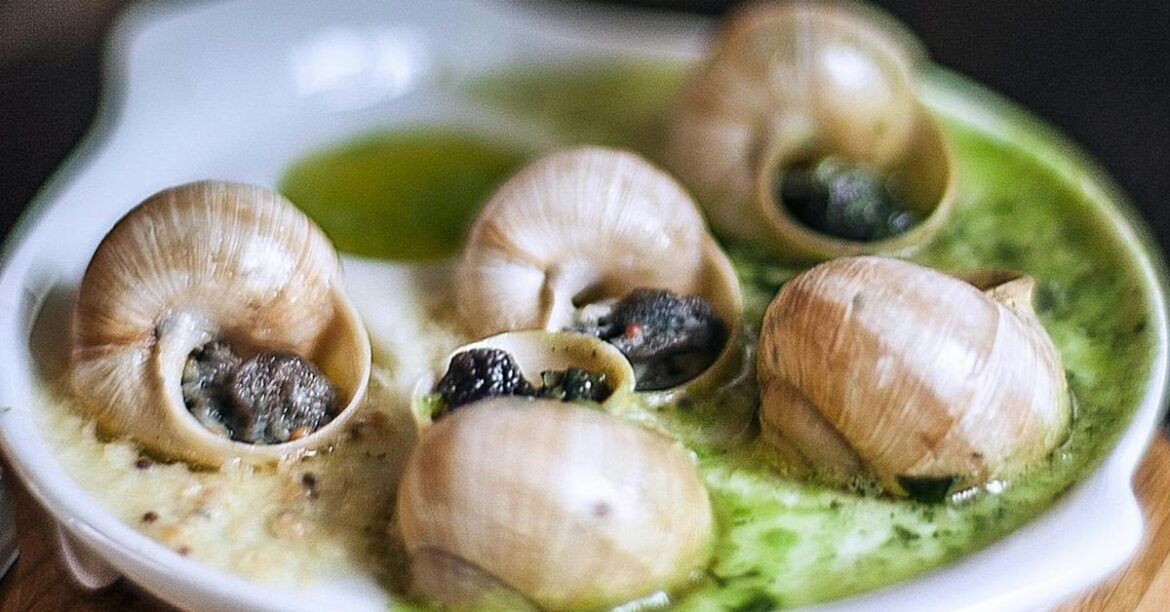When I ask French chef Alexis Besseau about escargot, he laughs.
“It’s more like a cliché touristy kind of thing,” the head chef of La Louisiane tells me.
Nevertheless, it’s something he says the Adelaide restaurant sells an amount of so significant, his Australian supplier couldn’t keep up with the sheer demand.
READ MORE: The $190 thread linking Tom Cruise with half of Hollywood’s elite
 Escargot is arguably the most famous dish of French cuisine, but not much is known about its origins. (Pexels)
Escargot is arguably the most famous dish of French cuisine, but not much is known about its origins. (Pexels)
Escargot is a delicacy that’s become enshrined as the poster child of French food, but its centuries-old origins – and rise to haute cuisine status – have been shrouded in mystery for just as long.
Like paella, lobster and quinoa, escargot was initially considered ‘peasant food’, with a widely-held belief it first emerged as a common dish in Ancient Rome. There is evidence by way of cave drawings, however, that edible snails have been consumed by humans all over the world since prehistoric times.
It was the abundance of edible snail species in the French countryside that saw it become a staple meat among local populations hundreds of years ago, but if you ask a French person today about escargot, they’re more likely to roll their eyes than pick up a fork.
Case in point: Besseau.
For a daily dose of 9Honey, subscribe to our newsletter here

French-inspired recipes to help you celebrate Bastille Day
“It’s become a classic because of the movies, because all the tourists and stuff want to try something iconic, but the actual French people don’t really eat a lot of snails,” he says.
It may not be so across the pond, but in Australia, escargot is considered the crème de la crème of fine dining. La Louisiane, Besseau says, sells at least 50 to 60 portions of it a week.
“Almost every second table gets snails,” he says.
READ MORE: Storage mistake that’s ruining your chocolate stash
Some historians argue escargot rose to notoriety in France in the Middle Ages because its categorisation as ‘shellfish’ made it a favourite among Catholics, who were able to eat it on meat-free Fridays.
However others argue escargot was not popular in the slightest, as the church considered it impure.
Like escargot’s origins and rise in popularity, the gentrification of escargot from your humble, everyday meal to a luxury indulgence is something that’s also become the stuff of legend, with no one tale pinpointed as the truth.

Now and then: Your favourite celebrity chefs and food icons
The most accepted story is the visit of Tsar Alexander I of Russia to Prince Talleyrand, Napoleon Bonaparte’s chief diplomat, in 1814.
According to the tale, the Imperial party stopped at a restaurant in Burgundy, catching chef Antonin Carême in a panic as there was nothing suitable to serve.
Carême is said to have walked out to his garden, clapped eyes on some snails, added garlic, parsley and butter to hide the taste, et voilà! Dinner – and a dish that’s gone down in history – was served.
According to Besseau, the garlic, parsley and butter element, at least, sounds plausible – edible snails are known to be extremely bitter on their own.
READ MORE: By the time you finish this sentence, thousands of Tim Tams will have had to have been made to keep up with demand
What is the difference between snails and escargot?
Not every land snail species is edible, with some actually poisonous to humans. The types of snails for eating are specially prepared by farmers and chefs in order to make them safe to ingest.
The most popular species to cook and eat is Helix pomatia – also known as Burgundy escargot – which is the most consumed species from France, and what Besseau imports from a farmer in France for his customers at La Louisiane.
Once they arrive, they go through an arduous preparation process. The snail’s mucus is removed, it’s rinsed and soaked in stock, seasoned, put back in the shell and then roasted.

It’s International French Fry Day (July 13th)
Escargot recipe
Simmone Logue’s escargot with garlic butter takes less than 15 minutes to make (when you have bought pre-cleaned edible snails) and serves less than four people.
Ingredients
2 garlic cloves, minced½ teaspoon of Maldon salt½ cup salted butter, softened1½ teaspoons of finely minced shallots1 tablespoon of dry white wineA few grinds of black peppercorn1 heaped tablespoon of parsley, chopped finely16 snails (fresh or tinned)16 sterilised snail shells
See the full recipe here.
FOLLOW US ON WHATSAPP HERE: Stay across all the latest in celebrity, lifestyle and opinion via our WhatsApp channel. No comments, no algorithm and nobody can see your private details.

